菲涅耳公式实现波动模型 python光学仿真通过菲涅耳公式实现波动模型
微小冷 人气:0想了解python光学仿真通过菲涅耳公式实现波动模型的相关内容吗,微小冷在本文为您仔细讲解菲涅耳公式实现波动模型的相关知识和一些Code实例,欢迎阅读和指正,我们先划重点:python光学仿真,菲涅耳公式实现波动模型,Python波动模型,下面大家一起来学习吧。
从物理学的机制出发,波动模型相对于光线模型,显然更加接近光的本质;但是从物理学的发展来说,波动光学旨在解决几何光学无法解决的问题,可谓光线模型的一种升级。从编程的角度来说,波动光学在某些情况下可以简单地理解为在光线模型的基础上,引入一个相位项。
波动模型
一般来说,三个特征可以确定空间中的波场:频率、振幅和相位,故光波场可表示为:

import numpy as np import matplotlib.pyplot as plt from mpl_toolkits.mplot3d import Axes3D z = np.arange(15,200)*10 #单位为nm x = np.arange(15,200)*10 x,z = np.meshgrid(x,z) #创建坐标系 E = 1/np.sqrt(x**2+z**2)*np.cos(2*np.pi*np.sqrt(x**2+z**2)/(532*1e-9)) fig = plt.figure() ax = Axes3D(fig) ax.plot_surface(x,z,E) plt.show()
其结果如图所示
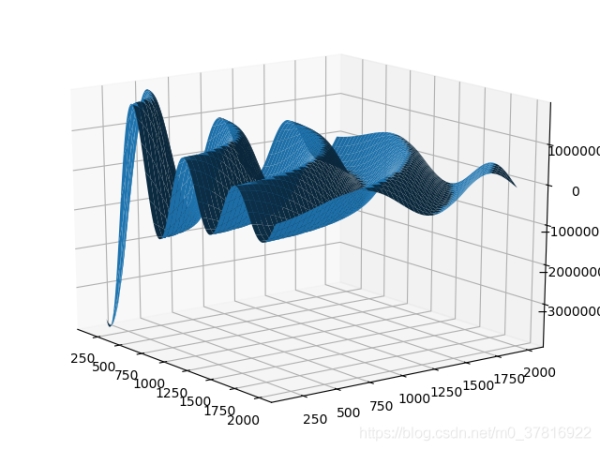
菲涅耳公式
几何光学可以通过费马原理得到折射定律,但是无法获知光波的透过率,菲涅耳公式在几何光学的基础上,解决了这个问题。
由于光是一群横波的集合,故可以根据其电矢量的震动方向,将其分为平行入射面与垂直入射面的两个分量,分别用 p分量和 s 分量来表示。一束光在两介质交界处发生折射,两介质折射率分别为 n1和 n2,对于 p光来说,其电矢量平行于入射面,其磁矢量则垂直于入射面,即只有s分量;而对于 s光来说,则恰恰相反,如图所示。
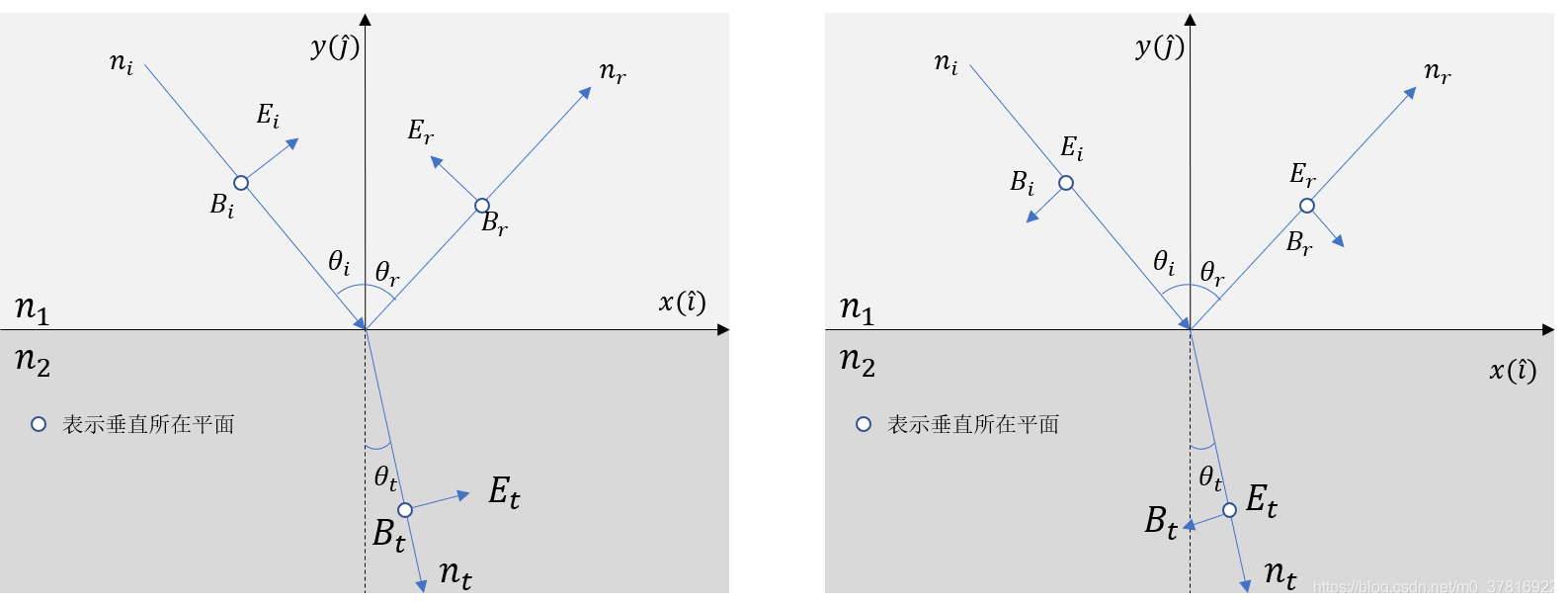
则对于 p 光来说即
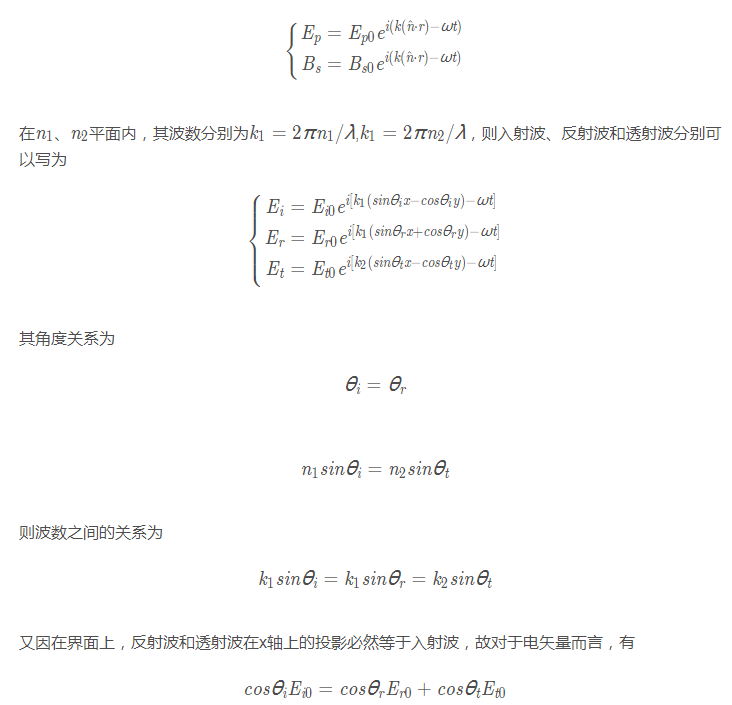
对于磁矢量而言,有
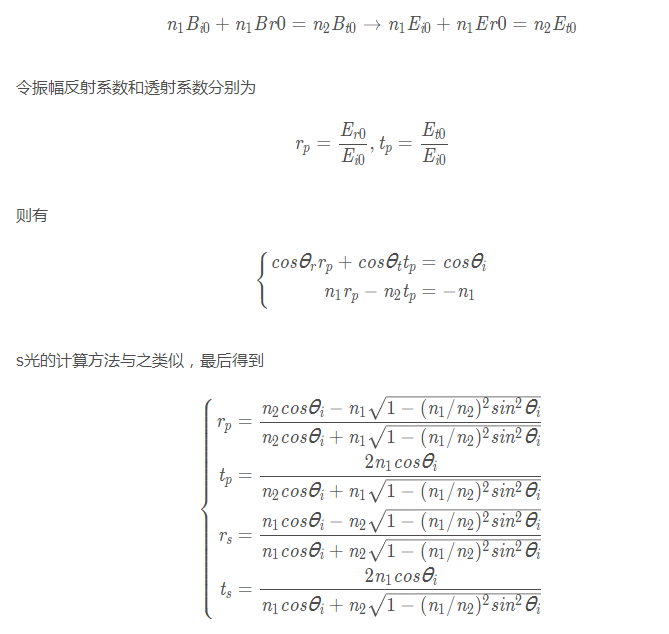
我们可以通过python绘制出当入射光的角度不同时,其振幅反射率和透过率的变化
import matplotlib.pyplot as plt
import numpy as np
def fresnel(theta, n1, n2):
theta = theta*np.pi/180
xTheta = np.cos(theta)
mid = np.sqrt(1-(n1/n2*np.sin(theta))**2) #中间变量
rp = (n2*xTheta-n1*mid)/(n2*xTheta+n1*mid) #p分量振幅反射率
rs = (n1*xTheta-n2*mid)/(n1*xTheta+n2*mid)
tp = 2*n1*xTheta/(n2*xTheta+n1*mid)
ts = 2*n1*xTheta/(n1*xTheta+n2*mid)
return rp, rs, tp, ts
def testFres(n1=1,n2=1.45): #默认n2为1.45
theta = np.arange(0,90,0.1)+0j
a = theta*np.pi/180
rp,rs,tp,ts = fresnel(theta,n1,n2)
fig = plt.figure(1)
plt.subplot(1,2,1)
plt.plot(theta,rp,'-',label='rp')
plt.plot(theta,rs,'-.',label='rs')
plt.plot(theta,np.abs(rp),'--',label='|rp|')
plt.plot(theta,np.abs(rs),':',label='|rs|')
plt.legend()
plt.subplot(1,2,2)
plt.plot(theta,tp,'-',label='tp')
plt.plot(theta,ts,'-.',label='ts')
plt.plot(theta,np.abs(tp),'--',label='|tp|')
plt.plot(theta,np.abs(ts),':',label='|ts|')
plt.legend()
plt.show()
if __init__=="__main__":
testFres()
得到其图像为
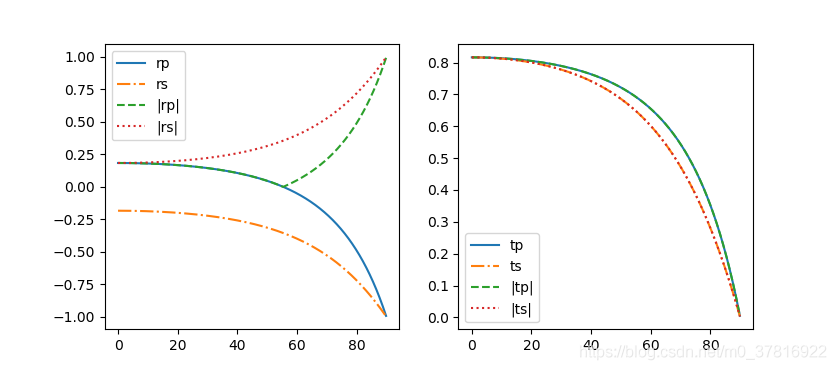

通过python进行绘图,将上面程序中的testFres改为以下代码即可。
def testFres(n1=1,n2=1.45):
theta = np.arange(0,90,0.1)+0j
a = theta*np.pi/180
rp,rs,tp,ts = fml.fresnel(theta,n1,n2)
Rp = np.abs(rp)**2
Rs = np.abs(rs)**2
Rn = (Rp+Rs)/2
Tp = n2*np.sqrt(1-(n1/n2*np.sin(a))**2)/(n1*np.cos(a))*np.abs(tp)**2
Ts = n2*np.sqrt(1-(n1/n2*np.sin(a))**2)/(n1*np.cos(a))*np.abs(ts)**2
Tn = (Tp+Ts)/2
fig = plt.figure(2)
plt.subplot(1,2,1)
plt.plot(theta,Rp,'-',label='R_p')
plt.plot(theta,Rs,'-.',label='R_s')
plt.plot(theta,Rn,'-',label='R_n')
plt.legend()
plt.subplot(1,2,2)
plt.plot(theta,Tp,'-',label='T_p')
plt.plot(theta,Ts,'-.',label='T_s')
plt.plot(theta,Tn,'--',label='T_n')
plt.legend()
plt.show()
得
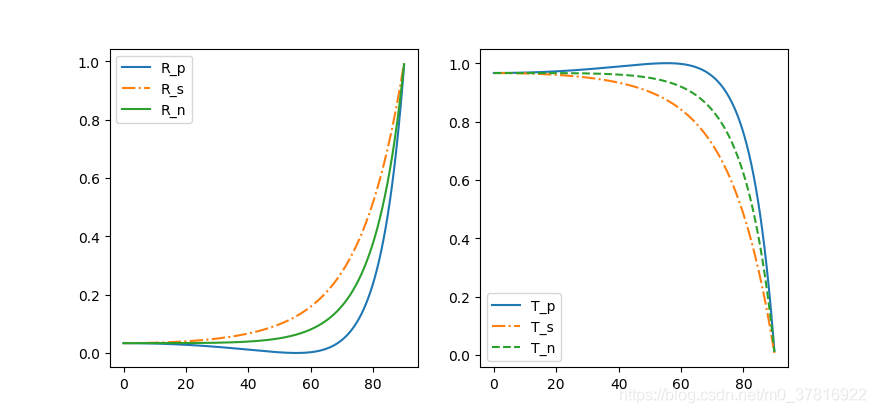
加载全部内容